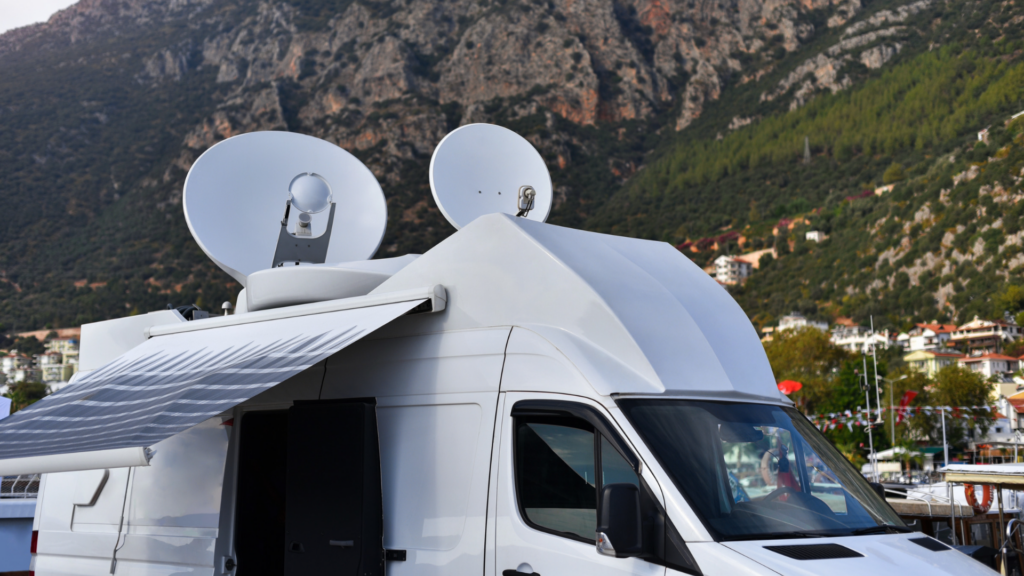








Mobile satellite terminals are widely used in various industries such as aviation, maritime, and remote locations where traditional communication methods are unavailable. A mobile satellite terminal's performance heavily depends on its antenna quality. Choosing the right antenna can make a significant difference in the reliability and efficiency of your communication system. With so many antenna options available, it can be overwhelming to determine which one is the best fit for your specific application. This article will discuss seven key considerations for antenna selection for your mobile satellite terminal.

One of the most important considerations when selecting a mobile satellite terminal antenna is its frequency range. Different satellite communication networks operate at different frequencies, and ensuring that the antenna you select is compatible with the frequency range of the network you will be using is essential. Make sure to check the frequency range specifications for the antenna to ensure that it is the right fit for your needs.
There are diverse types of mobile satellite terminal antennas available, including omnidirectional, directional, and phased-array antennas. Each antenna type has unique strengths and weaknesses, and it is important to select the one that best suits your application. For example, omnidirectional antennas are ideal for applications that require constant communication with multiple satellites. In contrast, directional antennas are better suited for applications that require long-range, high-gain communication with a single satellite.
The performance of an antenna is determined by its gain, frequency range, and radiation pattern. Gain measures how much the antenna amplifies the signal compared to an isotropic radiator. Frequency range refers to the range of frequencies the antenna can transmit and receive. Radiation pattern indicates the direction and shape of the signal the antenna sends and receives. During antenna selection, it is important to consider these factors and ensure they meet the requirements of your communication system.
The form factor is another key consideration when selecting a mobile satellite terminal antenna. The form factor of an antenna is its physical size and shape. In many cases, mobile satellite terminals are deployed in remote or harsh environments with limited space, requiring the antenna to be compact and lightweight. However, smaller antennas may sacrifice performance. Therefore, it is essential to balance size and performance to find the best form factor for your mobile satellite terminal. Make sure to consider the antenna's physical size and weight when selecting it to ensure that it can be easily integrated into your system.
Mobile satellite terminals face demanding environments that test the resilience of antennas, including extreme temperatures, high winds, and moisture. Choosing an antenna capable of withstanding these challenges becomes paramount. Optimal antennas for harsh conditions must exhibit ruggedness, weather resistance, and remarkable durability. Moreover, they must feature an adjustable radiation pattern, guaranteeing unwavering communication performance in any environment.
It is essential to consider the antenna's power consumption during antenna selection. Batteries and other limited power sources are often used as the power source for mobile satellite terminals. So, selecting an antenna designed to operate efficiently and minimize power consumption is critical. Look for antennas that have been optimized for low power consumption to ensure that your system operates reliably and efficiently.
The cost of an antenna can vary greatly depending on its performance, form factor, and environmental capabilities. It is important to balance cost and performance to ensure you get the best value for your investment. Additionally, it is important to consider the installation and maintenance costs when selecting an antenna.
In conclusion, choosing the right antenna for your mobile satellite terminal is a critical decision that can significantly impact your system's performance, reliability, and success. Consider these seven factors – frequency range, antenna type, performance, form factor, environmental conditions, power consumption, and cost – during your antenna selection process to decide on the best fit for your specific application.
Previous: Antenna-Related Challenges in Healthcare Environments
Next: Multi-Band Antennas: How Novocomms’ is Revolutionizing Mobile Satellite Communications
< RETURNFor any questions, please contact our Sales and Marketing team.
Contact Us